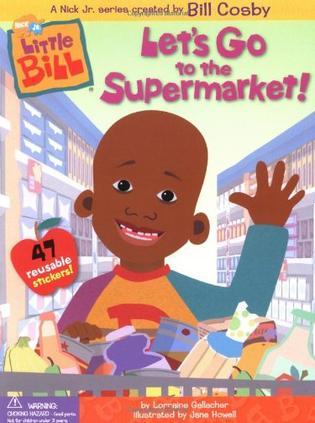访问学者研修计划怎么写?
 猎音师
猎音师 播抗战
播抗战
去百度文库,查看完整内容>内容来自用户:三一素材 【篇一】 本人在国内长期从事计算机以及相关领域的教学工作,此次申请出国留学,准备继续从事与我的教学背景相关的研究工作。初步计划选择研究课题为“开源操作系统在嵌入式系统中的应用”。 目前,嵌入式技术的发展方兴未艾,智能电子产品不断涌现,开源操作系统作为其研究方向之一,具有良好的发展前景,目前我国在此领域尚且处于起步阶段,而同类项目研究和设计在国外已趋于成熟,开源产品和开源代码资源丰富,研究方向处于前沿地位。 本次申请选择挪威为留学目的地,基于以下原因:地处北欧的挪威是欧洲的发达国家之一,其高等教育发达,全国有20余所高校,在信息领域具有发展优势,挪威是世界上大力支持开源软件的国家之一,其第二大城市卑尔根是挪威最有名的使用开源软件的城市之一。 本人已经从事嵌入式技术相关课程的教学工作三年之久,此次申请公派留学,选择的学校是######college,该校已经有多年嵌入式技术教学的成功经验,尤其在机器人领域有丰富的设计成果,与我目前的研究方向非常相符。目前我校尚无与挪威高校的合作基础及业务联系,如果留学成功,希望我可以作为开拓者,与国外同行进行广泛的交流,提高科研与教学能力。 本次留学申请,选择前往挪威的作为期
访问学者签证需要研究计划吗?
 尽于酒肉
尽于酒肉 落地点
落地点
1、一般来说还是需要,访问学者签证还需要研修计划。2、如果访问学者有研修计划则容易获得签证而不容易被拒签,所以最好还是提供研修计划。访问学者去美国的话签证类型是J1,英国的话是AV或者T5,加拿大是工作签证,其中有的需要研修计划,所以还是准备好吧。另外,申请访学的过程中也可能用到,所以准备好有备无患。
访问学者研修计划内容有哪些?
 敖德萨
敖德萨 蜜月期
蜜月期
去百度文库,查看完整内容>内容来自用户:三一素材 三一文库(www.31doc.com)/工作计划访问学者研修计划内容 访问学者研修计划书应包含以下内容: 1.选择申请该导师进行访学的原因; 2.出国访学目的、预期目标、计划、实施方法及所需时间; 3.研究课题在国内外研究情况及水平和应用情况; 4.达到本次出国访学预期目标的可行性; 5.学成归国后的工作和学习计划。在这些内容中,又以研修计划课题选取最为重要,因为导师最看重的还是你的研修课题。在选择研修计划的课题时,要关注国外导师目前正在研究的方向,选取导师感兴趣的课题。课题选取角度要面向全球,不要拘泥国内的热点问题,要关注研究课题的国内国外研究情况和水平,以及该项目的应用情况。课题选取切忌过于宏观或宽泛。如果选取课题过于宏观和宽泛,国外导师就很难搞清楚你的研究重点,也不会认为你的课题值得进一步研究。在研修计划中,要实事求是地陈述个人擅长的研究领域和已经完成的科研成果,展现个人创新观点和研究亮点,说明通过留学预计达到的研究目标,切忌夸大其词。课题选取的内容要有意义。要将个人赴国外研究此课题的意义重点突出,使国外导师认可此项课题在国外进行进一步研究的必要性。让导师看到你们合作研究的意义所在。
出国做访问学者研修计划书怎么写
 穷美究执
穷美究执 逛巴黎
逛巴黎
您访问学者研修计划书应包含以下内容:1.选择申请该导师进行访学的原因; 2.出国访学目的、预期目标、计划、实施方法及所需时间; 3.研究课题在国内外研究情况及水平和应用情况; 4.达到本次出国访学预期目标的可行性; 5.学成归国后的工作和学习计划。 在这些内容中,又以研修计划课题选取最为重要,因为导师最看重的还是你的研修课题。 在选择研修计划的课题时,要关注国外导师目前正在研究的方向,选取导师感兴趣的课题。课题选取角度要面向全球,不要拘泥国内的热点问题,要关注研究课题的国内国外研究情况和水平,以及该项目的应用情况。 课题选取切忌过于宏观或宽泛。如果选取课题过于宏观和宽泛,国外导师就很难搞清楚你的研究重点,也不会认为你的课题值得进一步研究。 在研修计划中,要实事求是地陈述个人擅长的研究领域和已经完成的科研成果,展现个人创新观点和研究亮点,说明通过留学预计达到的研究目标,切忌夸大其词。 课题选取的内容要有意义。要将个人赴国外研究此课题的意义重点突出,使国外导师认可此项课题在国外进行进一步研究的必要性。让导师看到你们合作研究的意义所在。
哪里有国外访问学者研修计划模板?
 朱修
朱修 程颢
程颢
你好,厚谱教育(访问学者申请领跑者)资深顾问为你解答。Topic: This research proposal suggests research on how the level of self-disclosure effects the degree of relationship satisfaction. Review of Literature: Guerrero & Afifi (1995) concted a study to examine topic avoidance and self-disclosure in family relationships. They found that males reported avoiding discussion of relationship issues more than females did. As Martin&Anderson(1995)sought to examine the motives behind self-disclosure in father-young alt relationships and the resulting level of relationship satisfaction, their study found that young alts seem to model their self-disclosure after their fathers' self-disclosure. Pegalis, Shaffer, Bazzini, & Greenier (1994) examined the generality of the opener effect to males and females across different situational contexts. They found that both genders disclosed more and longer to high openers than to low openers across the different contexts, Leaper, Carson, Baker, Holliday, & Myers (1995) used both same- and opposite-sex dyads in order to examine the relationship between listener verbal support and self-disclosure among friends. They found that females tended to be more responsive and supportive than males ring discussions in both same- and cross-gender friendships. However, it was also found that men made more disclosing comments than did women, indicating that it is possible for males to disclose as much as females. They also found that imbalances in self-disclosure and verbal support are related to relationship dissatisfaction. Drawing on these findings, it could be possible to anticipate that indivials who have similar patterns of self-disclosure would have higher degrees of relationship satisfaction. Continued research may further explore what other factors affect the degree of relationship satisfaction. Research Question: What effect does the level of self-disclosure have on the degree of relationship satisfaction? Hypothesis: Indivials who experience similar levels of self-disclosure will be more likely to have higher degrees of relationship satisfaction. Method: In congruence with the previous study concted by Martin & Anderson (I 995), a design involving approximately 200 undergraate students, I 00 male and I 00 female will be used. They will complete questionnaires consisting of measures of self-disclosure and communication satisfaction. They will also be given a questionnaire to have their significant others complete. This questionnaire will include the same measures. Participants will be informed that this research study focuses on self-disclosure and levels of relationship satisfaction, participation is voluntary, and their responses will be kept confidential. A self-addressed envelope will be enclosed to assist in confidentiality. Participants will complete the Self-Disclosure Scale (SDS) and the Communication Satisfaction Scale (CSS). Their responses will be compared with those of their partner's in order to assess the similarities between the pair's levels of self-disclosure to each other and their degree of relationship satisfaction. Participants will also be given a second questionnaire, which will ask them to assess what they believe to be their partners' level of self-disclosure and degree of relationship satisfaction. These responses will also be compared to examine whether indivials' self-reports of their levels of disclosure and satisfaction match up with what their partners believe their levels to be. Predictions: In response to the study done by Martin & Anderson (I 995), it should become clear that the amount of self-disclosure that occurs between indivials affects the relational satisfaction that is felt by both parties. Leaper et al. (1995) found that imbalances in self-disclosure and verbal support are related to relationship dissatisfaction. This would seem to indicate that the opposite would be true, as well. So, it may be found that indivials who experience similar levels of self-disclosure will have higher degrees of relationship satisfaction. A possible problem using the methods chosen is that self-report may not be entirely accurate. People may not truthfully portray their levels of self-disclosure and relational satisfaction. However, through the use of confidentiality and the second questionnaire that asks the partners to assess each other's levels, it is hoped that the potential for this problem may be decreased. References Guerrero, L., & Afifi, W. (Summer 1995). Some things are better left unsaid: Topic avoidance in family relationships. Communication Quarterly, 43, 276-296. Leaper, C., Carson, M., Baker, C., Holliday, H., & Myers, S. (1995). Self-disclosure and listener verbal support in same-gender and cross-gender friends' conversations. Sex Roles: A Journal of Research, 33. 3 8 7-405. Martin, M., & Anderson, M- (Spring 1995). The father-young alt relationship: Interpersonal motives, self-disclosure, and satisfaction. Communication Quarterly, 43, 119-130. Pegalis, L., Shaffer, D., Bazzini, D., & Greenier, K. (1994). On the ability to elicit self disclosure: Are there gender-based and contextual limitations on the opener effect? Personality and Social Psychology Bulletin, 20, 412-420.以上回答希望对你有帮助。
办签证的研究计划和拿2019表的研究计划一样吗
 大篷车
大篷车 对待
对待
1、一般来说还是需要,访问学者签证还需要研修计划。2、如果访问学者有研修计划则容易获得签证而不容易被拒签,所以最好还是提供研修计划。访问学者去美国的话签证类型是J1,英国的话是AV或者T5,加拿大是工作签证,其中有的需要研修计划,所以还是准备好吧。另外,申请访学的过程中也可能用到,所以准备好有备无患。
美国访问学者签证面签需要研究计划吗
 怀表
怀表研究生在读期间可以自己申请访问学者吗?难度大吗?
 冬柏花
冬柏花 柳遥
柳遥
你好!拿着你的workingpaper/writingsample跟国外老师联系对方有意向就有机会啊不过paper最好还是已经underreview或者发表了最好只有努力一切都有可能啊仅代表个人观点,不喜勿喷,谢谢。
访问学者申请流程?
 此处三焉
此处三焉 第二号
第二号
以英国使馆要求举例说明如下(也可自行到相关国家网站上查询):一、本人有效护照(有效期至少6个月) 二、公派人员基本情况表和机票订单(可在本网站下载后填写,机票订单上日期可先不填) 三、留学资格证书复印件两份 四、留学基金委出具的同意派出函复印件一份(无须同意函的项目除外);五、工作单位或学校的同意派出函(只针对建设高水平大学项目和研究生项目)六、邀请信复印件一份(复印件上需有所在单位的红色印章)(一)、“访问学者”类型签证 (VISA ACADEMIC VISITOR) 1、经过本人签名的有效护照原件及复印件一份。 2、照片:近期白色背景彩色照片(照片尺寸要求横35mm,竖45mm)一张。 3、邀请信:邀请信原件和复印件各一份。(请留学人员同时自备一份复印件,已备出国后使用)邀请信主要内容包括:邀请人姓名、单位、地址、电话号码;被邀请人姓名、单位、预定访问日期、停留期限、访问目的、经费来源以及Bench Fee的明确数额,如英方不需要Bench Fee也请在信中注明。 对申请“访问学者”(ACADEMIC VISITOR)类别签证的特别提醒:A.英方邀请人在邀请信中一定要明确写明被邀请人的赴英身份,只能写为“ACADEMIC VISITOR”,而不能用“VISITING SCHOLAR”、“VISITING ACADEMIC”、“SPONSORED RESEARCHER”等称呼,同时也要绝对禁止使用“WORK”,“STUDY”等字眼。特别是要绝对禁止提到希望或愿意加入到英国邀请方已经或即将建立的“正式研究项目”(FORMAL RESEARCH PROJECT)中。 B.英方邀请人在邀请信中一定要详细说明被邀请人的个人赴英研究目的和计划,一定要强调被邀请人是从事独立性的研究。C.英方邀请人在邀请信中最好能够详细说明被邀请人在其学术领域或工作中有突出的学术研究成就、专家地位等。D.申请“访问学者”(ACADEMIC VISITOR)类别签证,邀请信中不能提及安排参加英国院校的课程学习,否则将被视为学生身份。4、提供单位回聘证明信原件一份及复印件一份。如果是尚未工作的学生,请提供就读院校证明原件一份及复印件一份。5、资金担保证明原件一份及复印件一份。国家全额资助留学人员申办签证的担保证明由我处提供。6、照会:由我处提供。7、英国签证申请中心对于签证材料准备的清单请查看以下网址:http://www.vfs-uk-cn.com/chinese/checklist.aspx英国签证申请表格,请登陆以下网址自行填写:http://www.ukvisas.gov.uk/en/howtoapply/vafs/

 40004-98986
40004-98986




